Prevention isn’t perfection, it is culture
Creating a comprehensive accident prevention plan is crucial in ensuring the safety and well-being of craft professionals working on commercial construction jobsites. By implementing effective safety measures, construction companies can minimize risks and promote a culture of safety.
Five Key Components for Accident Prevention
This is not an exhaustive article on how to engineer all risks or event specific risks out of your job, but it is a practical outline of how to prepare a prevention plan that can help identify and eliminate the things that lead to accidents.
1. Risk Assessment and Hazard Identification:
Risk assessment and hazard identification should take place every day and become part of the actual work of performing their craft for all craft professionals. Training in identifying hazards as well as a good job hazard or task hazard analysis form will assist workers in being more thoroughly prepared for the things that might be encountered while completing their work. When asking craft professionals to conduct this piece of your prevention plan keep these three items at the forefront of the conversation.
- Risk assessment of the jobsite should be conducted in a thorough manner to identify potential hazards and risks associated with specific tasks.
- Regularly review and update the assessment as new hazards emerge or project conditions change.
- Train craft professionals on hazard recognition and reporting procedures to enhance their ability to identify and address potential risks.
2. Safety Policies and Procedures:
Written safety policies and procedures should be shared with craft professionals prior to their arrival on any jobsite. Additionally, as changes are made to the policies, procedures, or new regulations come out with regard to the work that a craft professional will be performing it is imperative that the accident prevention plan be updated and communicated. Ensuring you develop and enforce comprehensive safety policies and procedures tailored to the specific jobsite and tasks will increase the chances of accident prevention. Additionally, clearly communicating these policies to all craft professionals and ensuring they have access to written documentation is critical. Once the initial policy and procedures are documented it is wise to set up a routine and regularly review and update the protocols to reflect best practices as well as lessons learned from the jobsite.
3. Training and Education:
While it is not always possible to provide in classroom training or education covering every possible item in the accident prevention plan, it is important that safety training for craft professionals and safety professionals is part of the plan. Follow these three steps:
- Provide extensive safety training to all craft professionals before they begin work on the jobsite.
- Cover essential topics such as fall protection, personal protective equipment (PPE), equipment operation, and emergency procedures.
- Conduct regular refresher courses and toolbox talks to reinforce safe work practices and address any new or recurring concerns
4. Safety Equipment and Tools:
Ensure that all necessary safety equipment and tools are available and in good working condition. Provide appropriate personal protective equipment (PPE), including hard hats, safety glasses, high-visibility clothing, gloves, and respiratory protection. Regularly inspect and maintain equipment, such as scaffolding, ladders, and power tools, to ensure they meet safety standards. Empowering people to use PPE and maintaining the equipment used to perform their craft is critical to accident prevention.
5. Ongoing Communication and Reporting:
Communication plays a critical part in all aspects of our projects and is equally important to creating a culture of safety for your workforce. Encourage open communication among craft professionals regarding safety concerns or near-miss incidents. Additionally, establish a system for reporting accidents, injuries, and near misses promptly to ensure proactive notifications to safety teams of issues. Finally, analyze reported incidents to identify trends and implement corrective actions to prevent future accidents.
Conclusion:
Prioritizing safety and well-being on commercial construction jobsites is paramount to protect the craft professionals who build our infrastructure. By incorporating these five main components into an accident prevention plan—risk assessment, safety policies, training, equipment, and communication—companies can create a safer working environment, reduce accidents, and promote the overall well-being of their workforce. Remember, safety should never be compromised, and continual improvement is key to fostering a culture of safety on construction sites.
Need help getting started with your safety plan? Take advantage of C3’s JHA template C3.org.

